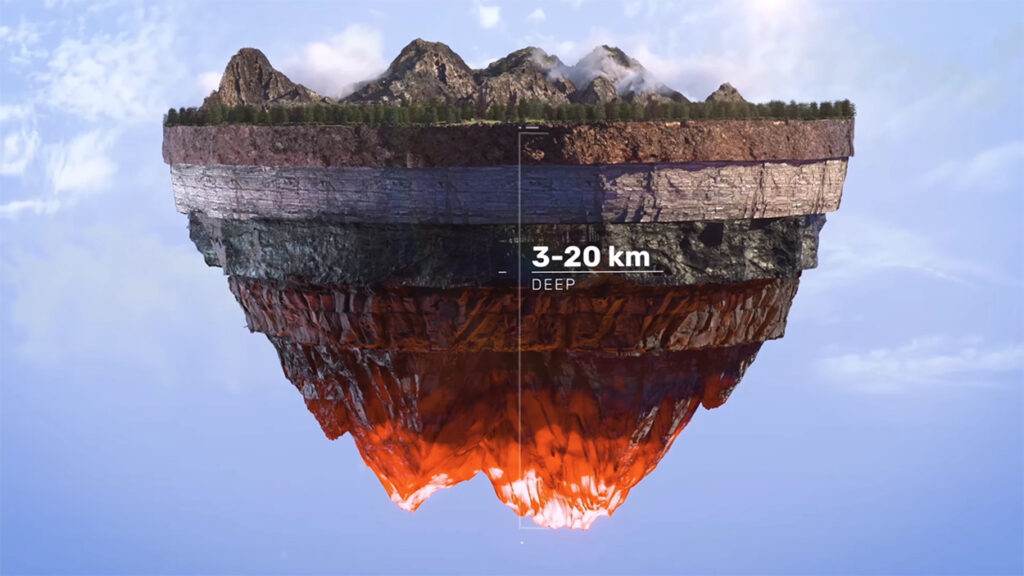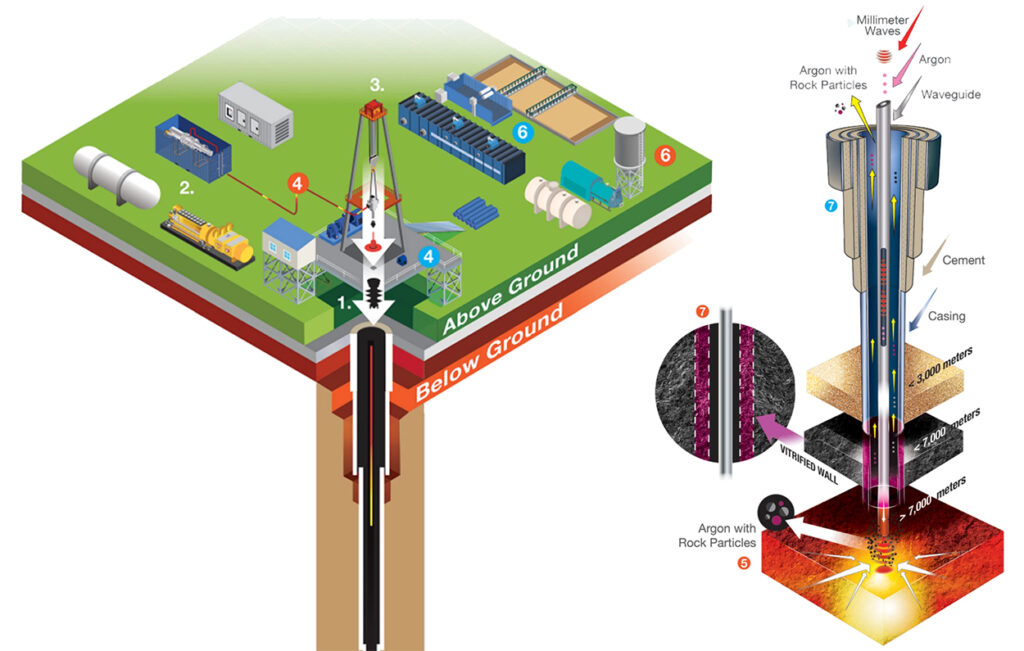Quaise Plans to Drill Deep to Unleash Almost Limitless Geothermal Energy

The Earth’s core is boiling. The estimate is that the core’s iron center temperature could reach 9,392 °F (5,200 °C). The temperature comes from the heat generated by the decaying radioactive elements combined with the remaining heat from the Earth’s formation many eons ago.
According to scientists and researchers, there will always be geothermal energy to harvest where there is access to heat. And according to an MIT senior fusion research engineer, Paul Woskov of the MIT Plasma Science and Fusion Center (PSFC), there is plenty of heat beneath the Earth’s surface. He says that getting even 0.1 percent of that heat could provide 20 million years of energy for the entire world.
Harnessing the energy
The world continues to search for renewable energy sources to stop relying on fossil fuels. Abundant energy is available. But the problem is how to harness that energy. Underground heat sources are close to the Earth’s surface. Thus, it is easy to access and close enough for a power grid to harness and transmit economically. But the situation is different with geothermal energy. It is reliable green energy that is available round-the-clock. However, the geothermal energy harnessed today supplies only about 0.3 percent of the power the world consumes.
The need for the deepest holes
To get to the geothermal energy deep within the Earth, people should dig holes deep enough to reach it. If that is possible, people can put up geothermal power stations everywhere. But that could be a pipe dream. For one thing, the Earth’s crust varies in thickness. The thinnest parts are under the deep oceans.
The Kola Superdeep Borehole is the deepest hole humans have drilled so far. It was a 1970 Russian project in the Pechengsky District near their Norwegian border. The project aimed to punch a hole through the crust to reach the Earth’s mantle. In 1989, one of the vertical boreholes succeeded in digging 40,230 ft (12,262 m) down before the team declared the project was not feasible. Unfortunately, the team also ran out of money, which stopped the project.
The members of the Kola team thought that the temperature at that depth would be about 100 °C (212 °F). However, they found that it was nearer to 180 °C (356 °F). Likewise, they found that the rock was not too dense. It was porous and made the drilling conditions very difficult because of the high heat. They abandoned the project, and the Kola site’s borehole is now welded-shut. It still holds the record as the Earth’s deepest artificial point.
Quaise’s test campaign
Quaise, Inc. is an MIT-spinoff startup. It plans to dig holes for harnessing geothermal energy better than previous attempts. Last October, Matt Houde of Quaise presented the company’s plans at the 2021 Geothermal Rising Conference in San Diego.
He said that the company is already on a testing campaign to use MIT’s disruptive drilling technology. The test campaign involved various researchers from MIT, the geothermal energy industry, and the Oak Ridge National Laboratory (ORNL). The project support comes from a grant from the Advanced Research Projects Agency-Energy (ARPA-E) of the U.S. Department of Energy.
Energy deep within the Earth
The primary source of geothermal energy is about two to twelve miles deep down the surface. However, the temperatures could be more than 374 °C (704 °F). If they pump water into these areas, it will become supercritical water (vapor, ice, liquid water). But supercritical water carries around five to ten times more energy than hot water.
According to the paper’s authors, while geothermal energy is available, the problem is that drilling operations cannot reach a depth of about 10 to 20 kilometers. It is not possible to use the drills used by the gas and oil industries because they could not withstand the extreme pressures and temperatures deep down.

Millimeter wave drilling
Quaise plans to replace the conventional drill bits with millimeter wave (MWW) energy. The MWWs can create deeper holes by melting and vaporizing rocks. Using a gyrotron, MIT’s Prof. Woskov developed the general technique for the process, which he worked on for a decade. He completed the testing recently with satisfactory results.
The new testing campaign Quaise is setting up at ORNL will also use a gyrotron. However, Quaise will be using a ten times more powerful unit than the one Prof. Woskov used for the lab test. The first phase of the trial will simulate the full drilling process, allowing them to vaporize rocks with a 10:1 aspect ratio.
The team is also getting ready for the future phases of the test campaign. They are building the plans and equipment for the second phase – drilling a hole with a drilling aspect ratio of 100:1, then moving on to the next stage with a 1000:1 aspect ratio they will demonstrate on the field.
The company plans to drill holes that will reach a depth of 20 km or 12.4 miles. The holes will be deeper than the Kola borehole, which took 20 years to achieve. With the gyrotron process, Quaise expects that in 100 days, they will reach the target depth. They are also aware that the temperatures at that depth will reach more than 500 °C (932 °F).
Quaise is currently building full-scale demonstration machines they can deploy on the field. The operations will begin in 2024. The company projects that by 2026, they will have the first operational super-hot enhanced geothermal system rated at 100 megawatts.